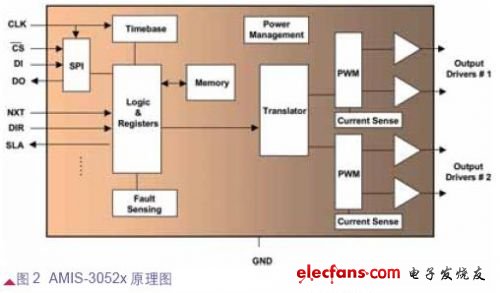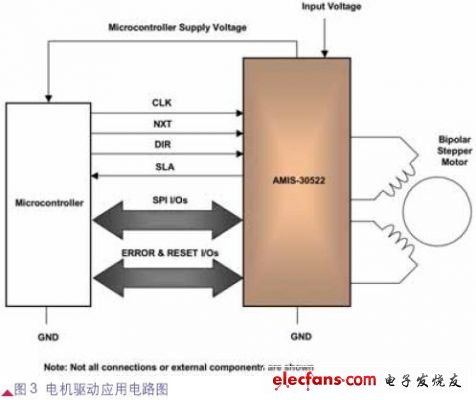The highly integrated Application Specific Standard Product (ASSP) has emerged as a beneficial alternative to electronic control units (ECUs) for discrete devices, providing damper position control for automotive heating, ventilation, and air conditioning (HVAC) applications. In addition to improving reliability, it also saves space, cost and weight, and provides precise position control and flexible design. As the automotive HVAC system becomes more complex, these advantages of ASSP become even more important.
This article refers to the address: http://
The HVAC system is the standard equipment for most cars today. This system is designed to achieve high efficiency, enhance reliability, improve passenger safety and comfort, while reducing size, weight and greenhouse gas emissions. Advanced sensing and closed-loop control functions are also being integrated into this system.
The sensor elements include temperature, humidity, and gas sensors, as well as sensors that measure solar radiation levels and determine the level of contaminants in the passenger compartment. Real-time data from this sensor array will be sent to various embedded intelligent electronic modules. These electronic subsystems are designed to achieve efficient adjustment of airflow in the passenger compartment by controlling the movement of various electromechanical components (Fig. 1).

The airflow from the HVAC system to the passenger compartment is primarily controlled by a mechanical damper that is integrated with the airflow duct. These dampers are used to direct the flow of air in various areas of the passenger compartment (multi-zone climate control) to control the mixing of hot and cold air, as well as the mixing of external and recirculated air (to control the pollution inside the cabin, thereby regulating the temperature). The damper is in turn connected to a DC motor machine (usually a stepper motor) to form a multitude of electromechanical subsystems.
The main challenge associated with the design of these electromechanical subsystems is to achieve real-time, fast and accurate airflow closed-loop control (the damper moves and positions while reducing the cost, size and weight of the system. In addition, to maintain passenger comfort Degree, requiring nearly zero noise operation of the motor and damper, while extending the operating life of the entire system and enhancing its reliability is also a key factor. To meet this series of demanding requirements, it is clear that the electronic module consisting of a large number of discrete integrated circuits will not Then there is a viable method.
The newly introduced AMIS-3052X step motion control ASSP enables automotive HVAC system designers to develop a final solution that is extremely flexible and efficient in solving system-level design challenges. It is based on a range of innovative integrated on-chip features that provide comprehensive programmable data communication, power management, motor control (speed, direction and position) and system protection. In addition, these devices are compatible with 5V and 3.3V microcontrollers and provide bidirectional data transfer via the SPI interface. The schematic of the device is shown in Figure 2. The typical motor drive application circuit is shown in Figure 3.


This paper describes the novel features and functions of the AMIS-3052X ASSP and its advantages in the design and operation of automotive HVAC systems.
When the light, smalll and portable Modified Sine Wave inverter build-in uninterruptable power supply system, you will find it's amazing. Don't need to worried about your desktop suddenly shut down anytime any where. It could also keeps your fan working at the same time. Only thing you need to prepare is some batteries and our Modified Sine Wave UPS inverter.
Modified Sine Wave UPS
Modified Sine Wave UPS,Modified Sine Wave UPS Power,UPSs Series Modified Sine Wave,Modified Sine Wave
Guangzhou City Poojin Electronic Technology Co., Ltd. , http://www.inverter-belttt.com
